
Grant Recipients
In its first five years, the China Global Conservation Fund supported 21 projects covering TNC’s five regions.
Watch Video2020 Grant Recipients

Africa: $250,000
Rhino Rescue, Creating a Sanctuary at Loisaba
Without adequate safe space to grow and thrive, the eastern black rhino doesn’t stand a chance of survival. Loisaba Conservancy in Kenya’s Laikipia County offers hope. Established in 2014 with support from TNC and the generosity of CGCF members, this 56,849-acre gem has become a hub for research on lions, leopards, elephants and giraffes.
With CGCF help, we’ll add rhinos to the list (50-80 individuals eventually), just as Lewa Wildlife Conservancy did in 1983. For the first time in nearly half a century, rhinos will return to Loisaba, where they will have a home for generations to come. Here, they will delight visitors to the ecotourism camps, benefit local communities and contribute to the success of the private-community conservation model that TNC is helping to build across Kenya’s wild north.
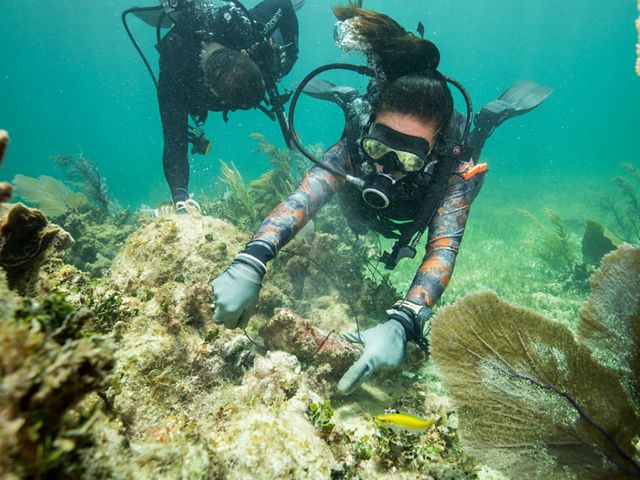
Mexico’s Caribbean: $250,000
Mainstream the Use of Natural Systems to Reduce Climate Risk
TNC's Coastal Risk and Resilience (CRR) strategy aims to mainstream the use of natural systems for coastal protection. In Mexico’s Caribbean, we have partnered with the private sector, governments and communities since 2014 to make the case for conserving nature’s readily available systems—reefs, dunes and mangroves—to mitigate the impacts of climate events on the coast.
TNC has developed the science to demonstrate how these ecosystems protect the coast and is creating the tools, know-how and local capacities to restore and conserve them. In 2018, together with the state government of Quintana Roo, Mexico, we launched the state’s Coastal Zone Management Trust, a financial mechanism that will channel private and public capital towards the conservation and restoration of coastal ecosystems.
The Trust has now purchased a first-of-its-kind insurance policy for reefs and beaches to cover restoration activities. The next phase for CRR in Mexico is to work closely with private capital and public programs to invest in the restoration and conservation of reefs, dunes and mangroves to reduce risk by mobilizing capital towards ecosystem restoration. The timing is ideal to harness the interest generated in financial and conservation circles as a result of the reef insurance purchase, and to accelerate the pace of conservation by building local capacity for ecosystem restoration, driving policy changes and generating stakeholder and corporate engagement.

Asia Pacific: $200,000
Protecting Timber Elephants and Securing Carbon Emission Reductions in Myanmar
For centuries, the timber industry in Myanmar (formerly Burma) has relied on Asian domesticated elephants for hauling teak and other valuable hardwood from forest to mill. These animals represent one of the world’s best reduced-impact logging strategies. However, Myanmar’s timber elephants—both domesticated and wild—face shrinking habitat, poaching, and the threat of being sold into the tourism industry in neighboring Thailand, where abuse of baby elephants is well-documented.
At the same time, TNC is committed to reducing carbon emissions in Myanmar’s forests and works with the government to better manage production forests and create new protected areas—both which will help the nation meet its commitment under the Paris Climate Agreement. The use of timber elephants represents the third-largest potential source of emission reductions among Myanmar’s natural climate solution options. We are aiming to accelerate our multi-stakeholder efforts to improve animal welfare for timber elephants, protect forest habitat, provide needed alternative livelihoods for communities through eco-tourism and promote research on timber elephants’ contribution to a unique, low-carbon pathway for Myanmar.

India: $200,000
Wetland Restoration and Greenprinting in Chennai
Chennai made global headlines this year due to a severe water crisis that affected 11 million people. Due to the debilitating cycle of severe droughts and catastrophic flooding in Chennai, TNC India prioritized the city as a critical location to demonstrate how watershed restoration can provide urban solutions. Working in Chennai since 2017, TNC started with the restoration of Sembakkam Lake as a pilot project to demonstrate how conservation solutions can provide ecosystem services for people and nature.
Over two years of work in Chennai, TNC has developed a strong proof of concept and has learned who to work with and where to focus efforts in order to be most effective. Taking these learnings and leveraging the expertise of TNC’s Global Cities team to scale up efforts, TNC aims to help create long-term resiliency and improve water security in Chennai by developing a greenprint for the city.
The greenprint will result in the creation of a strategic conservation plan and framework to advance efforts that also provide socioeconomic benefits in Chennai. The Global Cities team is working with TNC teams in select cities around the world to advance new models of urban planning and natural infrastructure restoration that can be replicated through global networks. Chennai is an ideal city to leverage this approach as it represents urgent need for sustainable solutions for the metro population.
2019 Grant Recipients
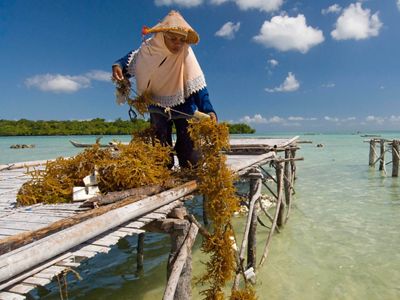
Asia Pacific: $350,000
Fish, Habitat and Prosperity: A Vision for Sustainable Aquaculture
The Asia Pacific, home to 90 percent of the global aquaculture industry, is one of the region’s best opportunities for achieving food security, reducing poverty, and strengthening traditional ways of life in indigenous communities. When practiced in a sustainable manner, aquaculture can provide a resource-efficient food source for millions of people while also ensuring protection of coral reefs, seagrasses, and other coastal ecosystems that have been badly degraded in recent years, threatening sea turtles, sharks, dolphins, and dugongs, among other marine species. TNC Asia Pacific aims to put 100,000 hectares of ocean area under improved aquaculture management in three strategic environments: 1) In Indonesia, implement seaweed aquaculture best practices that reduce negative ecological impacts to coral reefs, mangroves, and marine species and can be scaled to the nation’s 1 million seaweed farmers via mobile app technologies; 2) In the Federated States of Micronesia (FSM), support the development of at least three pilot rabbitfish farms supported by a strong governance framework that can be scaled throughout Micronesia to improve food security and community incomes; 3) In New Zealand, establish the scientific, economic, and cultural evidence base and policy guidance needed to significantly expand an ecologically restorative seaweed and shellfish aquaculture industry with full participation of Māori groups.
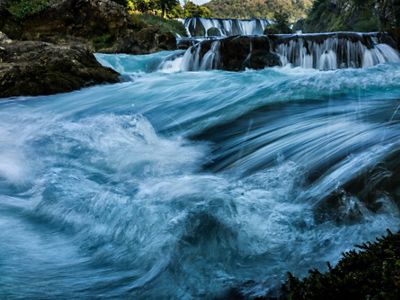
Europe: $330,000
Saving Western Balkan Rivers
The Balkans are one of the three major peninsulas in southern Europe, including Albania, Croatia, Bulgaria and other countries, and are the bridge between Europe and Asia. In order to accelerate economic development, the peninsula countries have increased the proportion of renewable energy exploitation. If there are no sophisticated plans, the new dam will destroy the original environment and landscape rivers, which are vital for protecting iconic wildlife such as brown bears, wolves, fish and birds. These rivers are also natural resources that local people need to survive.
The project aims to save the last few free-flowing rivers in the western Balkans. Our aims are to: 1) establish a scientific research base through local surveys of biodiversity; 2) cooperate with governments and environmental organizations to build a “national park ”protection model; 3) conduct research on policy and economic benefits to influence decision makers and urge a formal and permanent law-making for river protection; 4) extend the results and affect all EU and developing countries.

Argentina: $270,000
Scaling Reforestation to Tackle Climate Change and Boost the Economy
Argentina is a major exporter of grains and meat, and these agriculture practices are a main cause of deforestation. Reforestation offers up to 10 percent of global emissions reductions and keeping global warming under two degrees Celsius by 2030. Argentina’s ForestAr 2030 is a key national initiative that takes on this reforestation challenge through a pioneering model aiming to boost the country’s economy and increase environmental sustainability. It encompasses seven Argentinian ministries, and local NGOs, where TNC plays the role of orchestrator. TNC Argentina aims to aid ForestAr 2030 to tackle a complex climate change problem by: 1) restoring native forests in critical biomes — 20,000 hectares of forests in the Gran Chaco region, home to South America’s largest dry forest, and monitoring carbon mitigation via Forest Restoration Monitoring Integrated System; 2) establishing Forest and Climate Change Trust Fund at an expected scale of $ 50-60M; 3) developing a command-and-control tool to support the Argentine government to establish a Rural Environmental Registry for landowners, and inform environmental authorities of the spatial configuration of land use relative to the forest conservation categories; 4) expanding the commercial forestry sector sustainably through promotion of Agroideal — a decision support tool for traders to source soy and beef from verified deforestation-free producers, and mobilizing $800,000-$ 1 million from private investors for innovative, environmental friendly forest businesses.
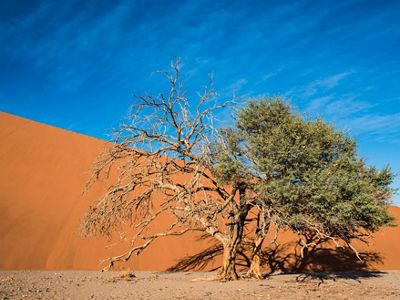
Africa: $200,000
Namibia Land Deal to Create a New Transfrontier Park
The arid Kalahari region of southern Africa spans parts of Namibia, Botswana and South Africa, and it is a critical ecosystem that supports many endemic and rare wildlife species including the black maned lion. Botswana and South Africa have established a 23.7-million-acre transboundary park called the Kgalagadi on the border with Namibia. Fences erected on private ranches across the Kalahari region are the main cause of declining wildlife numbers seen here since the 1960s. This project aims to capitalize a $7 million commitment from an anonymous foundation that will fund the land purchase under the condition that TNC raises the additional funds to complete the necessary due diligence and purchase and transfer agreements. TNC Africa will complete this land deal on three private land parcels in southern Namibia totaling 92,036 acres adjacent to Kgalagadi Transfrontier Park, revitalize wildlife migratory corridors and transfer that land for designation and management as a national park. It will also create a conservation master plan to prioritize other private land acquisition opportunities in south-central Namibia, to help advance the country’s black rhino protection strategy.
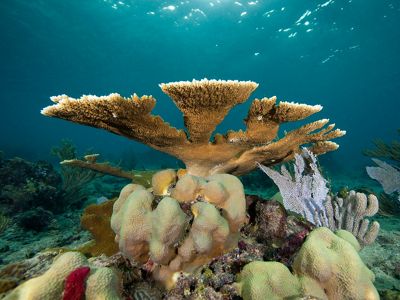
Caribbean: $270,000
Coral Capital – Building Resilience and Reducing Risk
Climate change is now causing more intense and frequent storms with flooding, beach and shoreline erosion, and other devastating impacts to people and businesses. Governments and insurance companies have spent billions of dollars to recover from the damage. TNC has robust, on-the-ground experience in restoring coastal ecosystems — coral reefs and mangroves — that protect coastlines and help reduce flood risks and the impacts from these disasters. Using state-of-the-art models and technology from insurance and engineering firms, TNC Caribbean is working to rigorously quantify where coral reefs provide protection from storms and flooding. This project aims to carry out two broad actions across the Caribbean: 1) identify two most cost-effective locations for major coral reef restoration action, by using advanced models that integrate hydrodynamic, geospatial, social and economic data to produce maps and results in the form of a Caribbean-wide, web-based, interactive, online decision-support tool; and 2) engage the public (e.g., government’s disaster relief agencies) and private sectors (e.g., reinsurance firms) to systematically advance a new and innovative coral reef restoration financing model (Coral Capital), designed to mobilize large-scale funding.

India: $230,000
“Happy Seeder”: Developing Sustainable Agriculture in Response to Climate Change
In India, farmers usually burn crop residue to prepare for the next season, but crop burning can lead to air pollution, climate change and the loss of soil nutrients. On the other hand, in order to meet the living needs of its citizens, India must increase crop yields by 70 percent. “Happy Seeder” is a farm tool that can realize the harvesting and sowing process. It can lift and mash rice residue from the field, “no-till” the seeds of the next crop and then use the chopped waste directly as a cover around the seeds. This new farming method can reduce winter air pollution by up to 40 percent, while reducing 80 percent of agricultural equipment usage, 20-25 percent of irrigation demand and up to 50 percent of herbicide use. It can increase production significantly under drought conditions.
TNC plans to: 1) Start from seven demonstration zones in three states of India, mobilizing 1000 “farmer ambassadors” across 20,000 hectares of demonstration farmland; 2) organize community stakeholders and enterprises to participate in field projects, demonstrating the feasibility of alternative farming and the ecological and economic benefits it generates; 3) use government subsidies to expand the use of new planters; 4) share experiences with other countries in the Asia Pacific region to reduce the burning of crops in countries and regions facing the same challenge.
2018 Grant Recipients
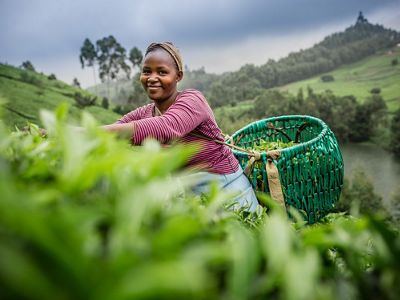
Kenya and Mexico: $400,000
Soil Health and Water Funds: Innovative Solutions for Our Climate, Lands, and Waters
Healthy soil and healthy rivers are interconnected. To address both, The Nature Conservancy is combining two innovative strategies from our Global Lands and Global Water programs-soil health and water funds-to tackle critical issues like food security, climate change, and sustainable hydropower.
Better soil management, including simple solutions such as cover crops, reduced tillage, and adaptive grazing management, can bring a wealth of benefits to people and nature. These practices also lock carbon into the soil instead of allowing it to escape into the atmosphere. By combining soil health with our water funds strategy, we can also improve river health by reducing soil and fertilizer runoff into rivers and build an economic case for this work. With support from the China Global Conservation Fund, we will implement this approach at two biologically important sites, the Upper Tana Watershed of Nairobi, Kenya, and the Chiapas Water Fund in Mexico.

Asia Pacific Oceans: $400,000
Shellfish Reefs: Restoring the Pearl of Asia Pacific Marine Ecosystems After Decades of Destruction
The large-scale disappearance of shellfish such as oysters and mussels from marine environments in Asia Pacific has widespread consequences for the over 1 billion people who live in the region’s coastal areas. Over 90 percent of the Asia Pacific’s once-abundant shellfish reefs are gone, as are many of the key services they provide, such as water filtration, shoreline protection, habitat for plants and animals, and a major source of income to coastal fishers. Without immediate intervention, what’s left of these critical ecosystems may disappear almost entirely.
The good news is that oyster reefs and other shellfish ecosystems can be restored. Across Asia Pacific, The Nature Conservancy has the science and expertise to build a sustainable future for coastal zones through intensive restoration of key shellfish reef areas. Support from the China Global Conservation Fund will help us demonstrate, at multiple project sites, how restoration and improved management can achieve long-term shellfish reef and coastal water recovery, while also providing an opportunity for communities to engage in conservation.
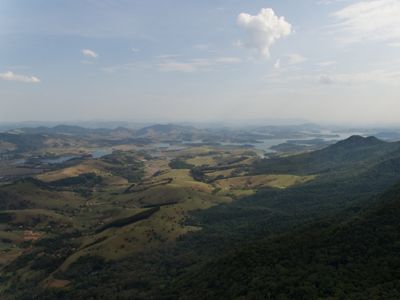
Brazil: $300,000
Tackling Climate Change at Scale: Restoring 1.2 million hectares of forest in the Mantiqueira Mountains
Addressing climate change is the defining challenge of modern environmentalism. Reforestation in tropical countries, where opportunity costs are low and tree growth rates are high, is a relatively inexpensive and scalable carbon sequestration opportunity. But even “inexpensive” solutions require outside funding, which has proven impossible to find at scale. The alternative is to create approaches to climate change mitigation that are financially attractive to those who implement them. These approaches provide true change, in which climate mitigation becomes self-funding and self-perpetuating.
With support from the China Global Conservation Fund, The Nature Conservancy will bring together two of our longstanding strategies in Latin America—water funds and forest restoration—to create the necessary conditions to restore 1.2 million hectares of Brazil’s endangered Atlantic Forest in the iconic Mantiqueira Mountain range, meeting 10 percent of Brazil’s national forest restoration commitment under the Paris Climate Change Agreement.
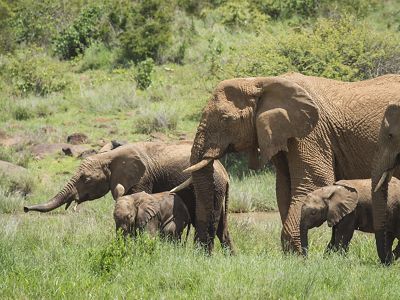
Northern Tanzania: $200,000
Protecting A Cross-Border Elephant Corridor Through Community Conservation
The wildlife corridor linking Tanzania’s Kilimanjaro National Park with Kenya’s Amboseli National Park hosts the seasonal migration of thousands of zebra and wildebeest, and more than 1,000 elephants as they travel time-worn paths between wet and dry season grounds. Here, and across east Africa, free movement is essential to life. If these ancient paths are cut off by agricultural development or made unsafe by poachers, Africa’s most iconic wildlife, and the economic opportunities they bring to the region, will falter.
Most of this globally important wildlife corridor comprises community lands managed by resident agro-pastoralists, including Enduimet Community Wildlife Management Area (CWMA). Funding from the China Global Conservation Fund will support the Conservancy’s work with Enduimet CWMA to introduce management and business innovations that, over the next five years, will transform it into a well-managed and financially sustainable CWMA that effectively protects the region’s wildlife from the threats of poaching and habitat destruction while bringing value to local communities from increased tourism revenues.